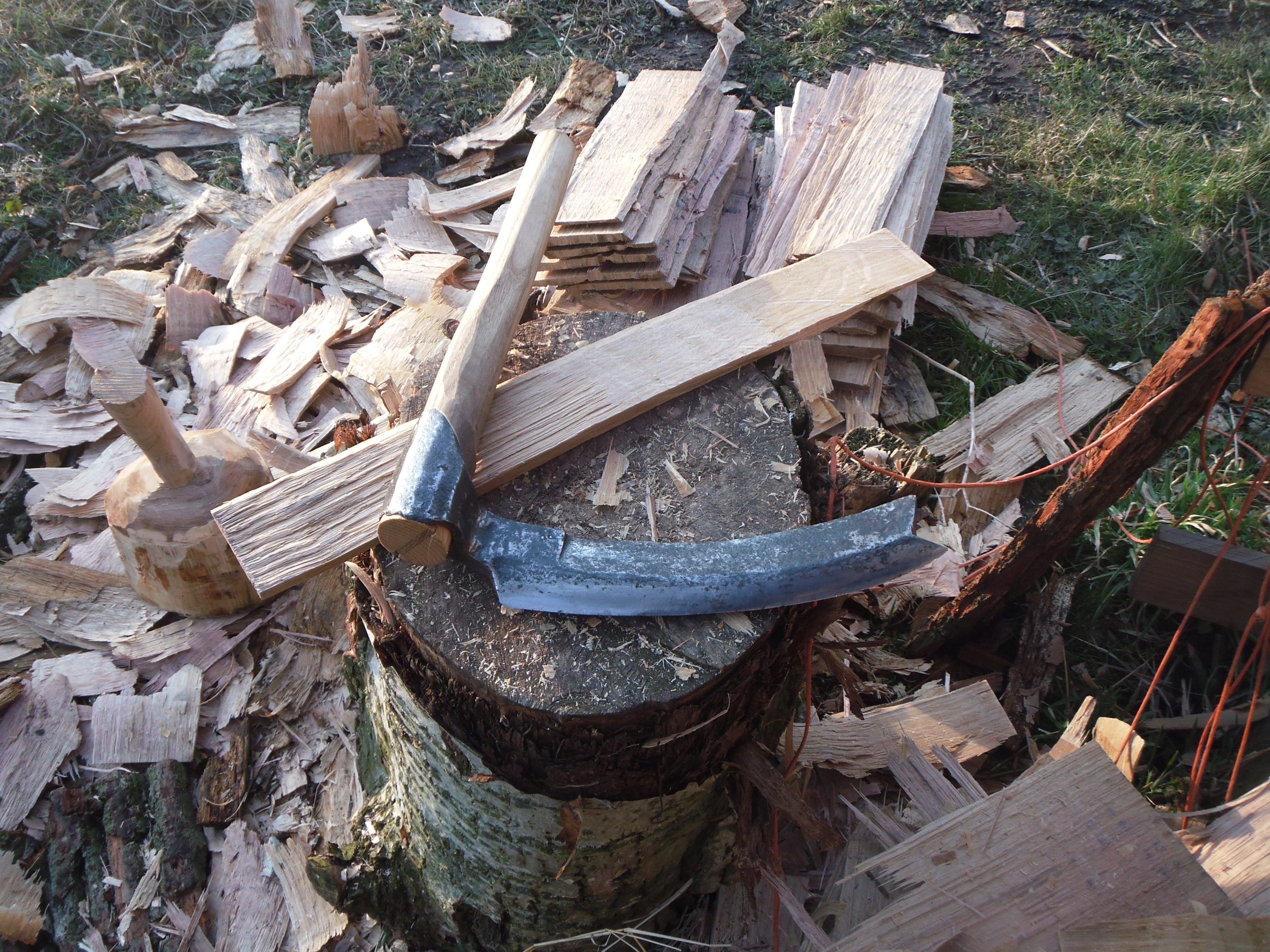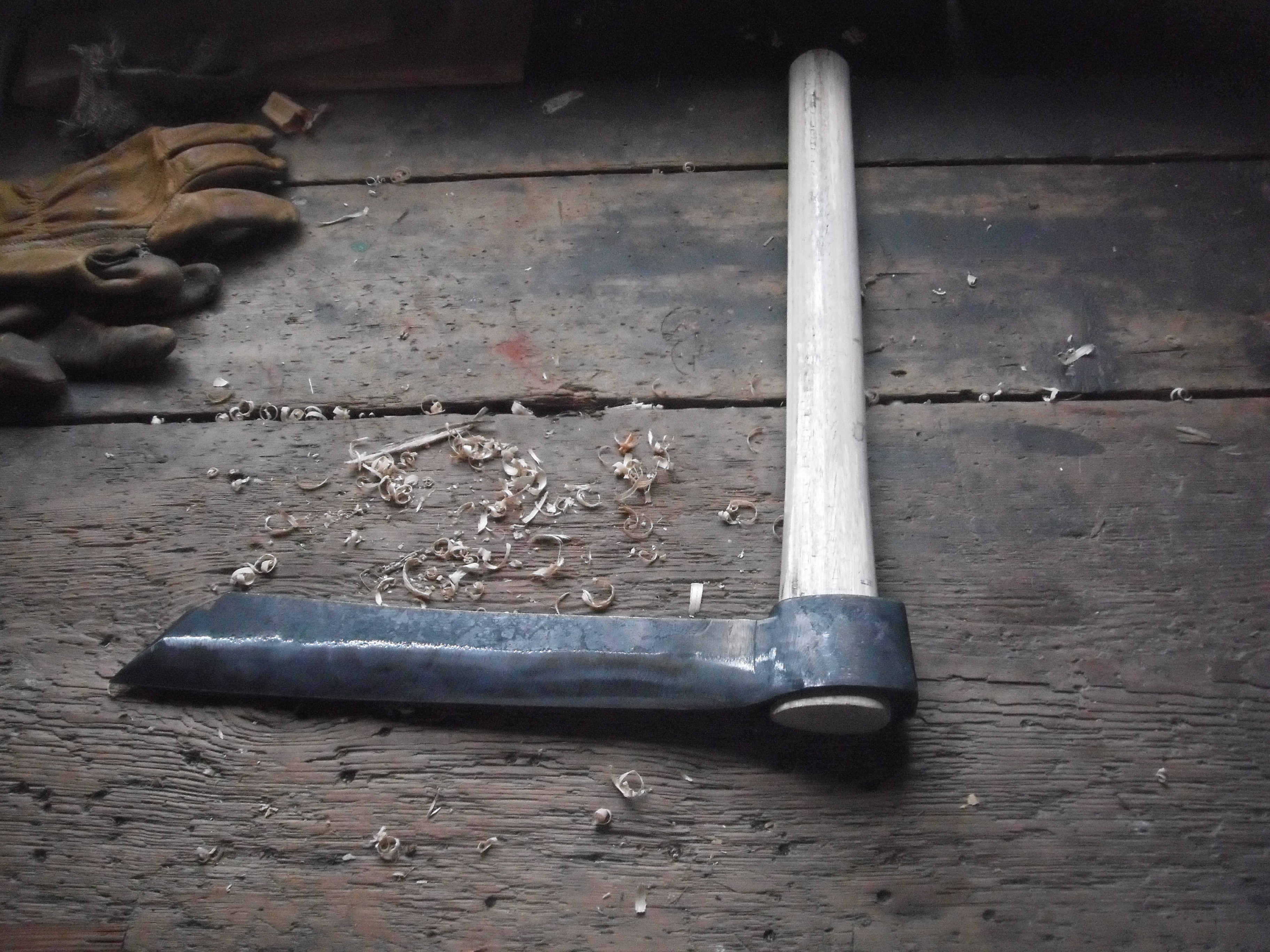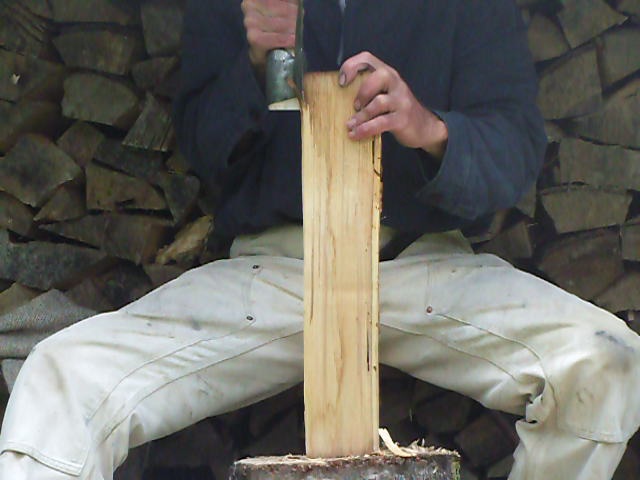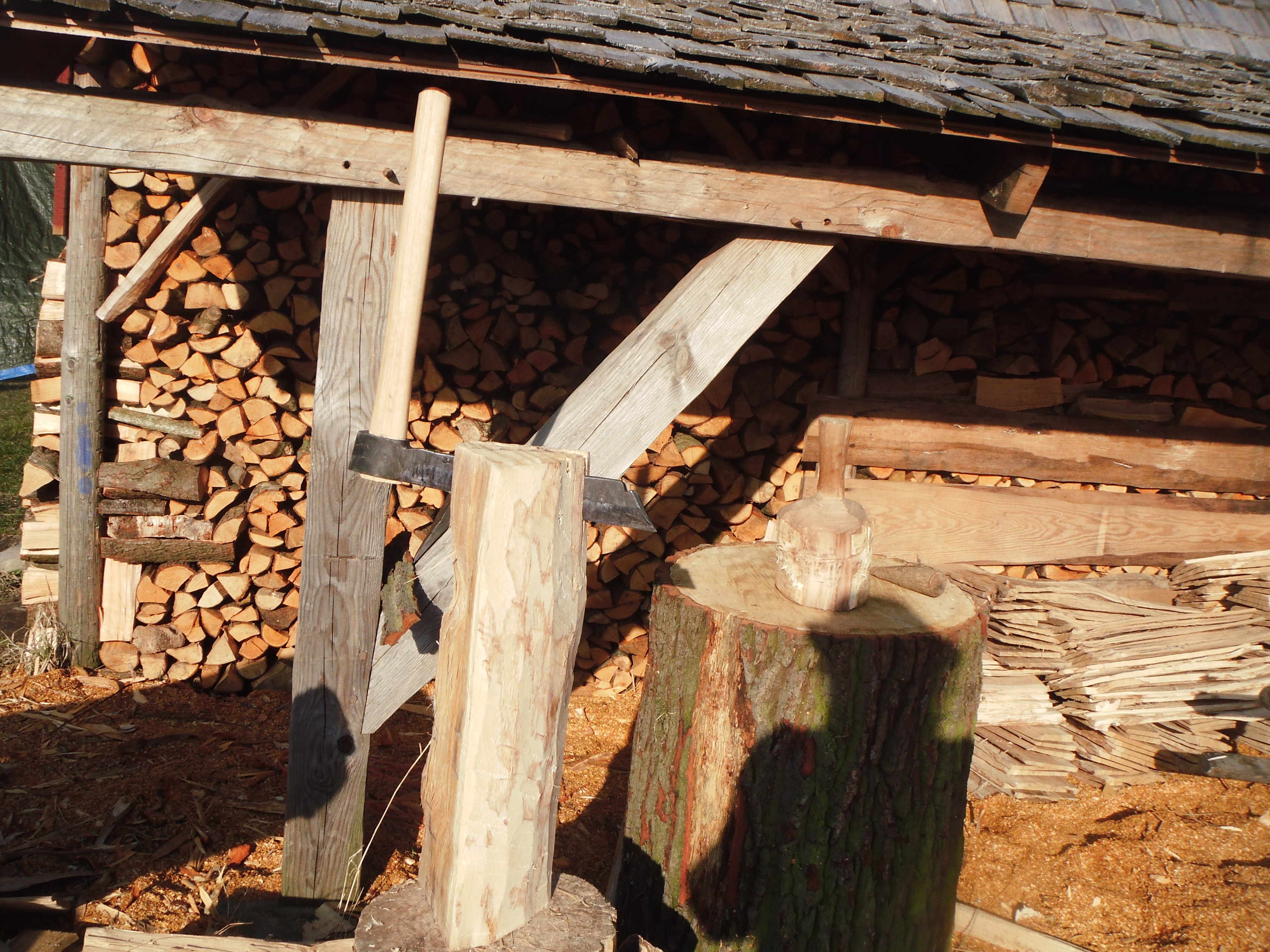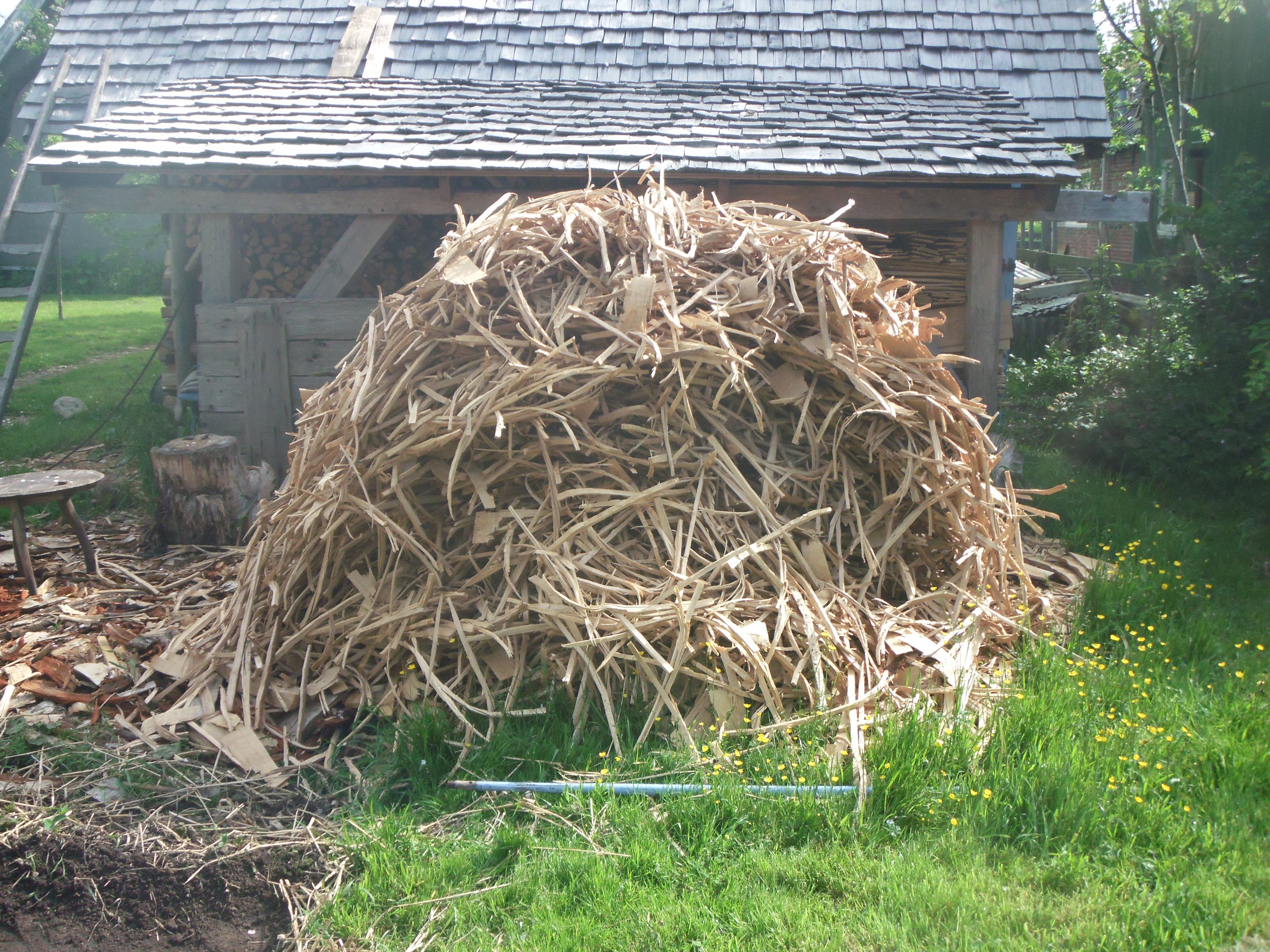- Joined
- Jan 15, 2001
- Messages
- 3,486
Last night on You Tube I ran across a video made by a German firm, on a man making wooden shingles for a church restoration in Slovenia. He starts with a large tree trunk, de-barks it, then using a chain saw cuts off a section which looked to be about 4-5 feet long, and 3 feet across. After that it is all hand tools. He starts with an axe head, with a broken handle, another axe complete and using a large maul splits the log with apparently not a lot of effort. The he goes to a froe, a Hatchett, three wooden wedges to complete the process. Goes into a building and using the froe, splits the log sections, finer and finer, till he has wooden shingles that look to be about 4 feet long, and maybe 8 inches wide, 1/2 inch thick. It also showed him and other men working on the very steep church roof. There are German sub-titles, no English, but just watching you can figure out what is happening. the name of the video is: Herstellung von Holzschindein. John


